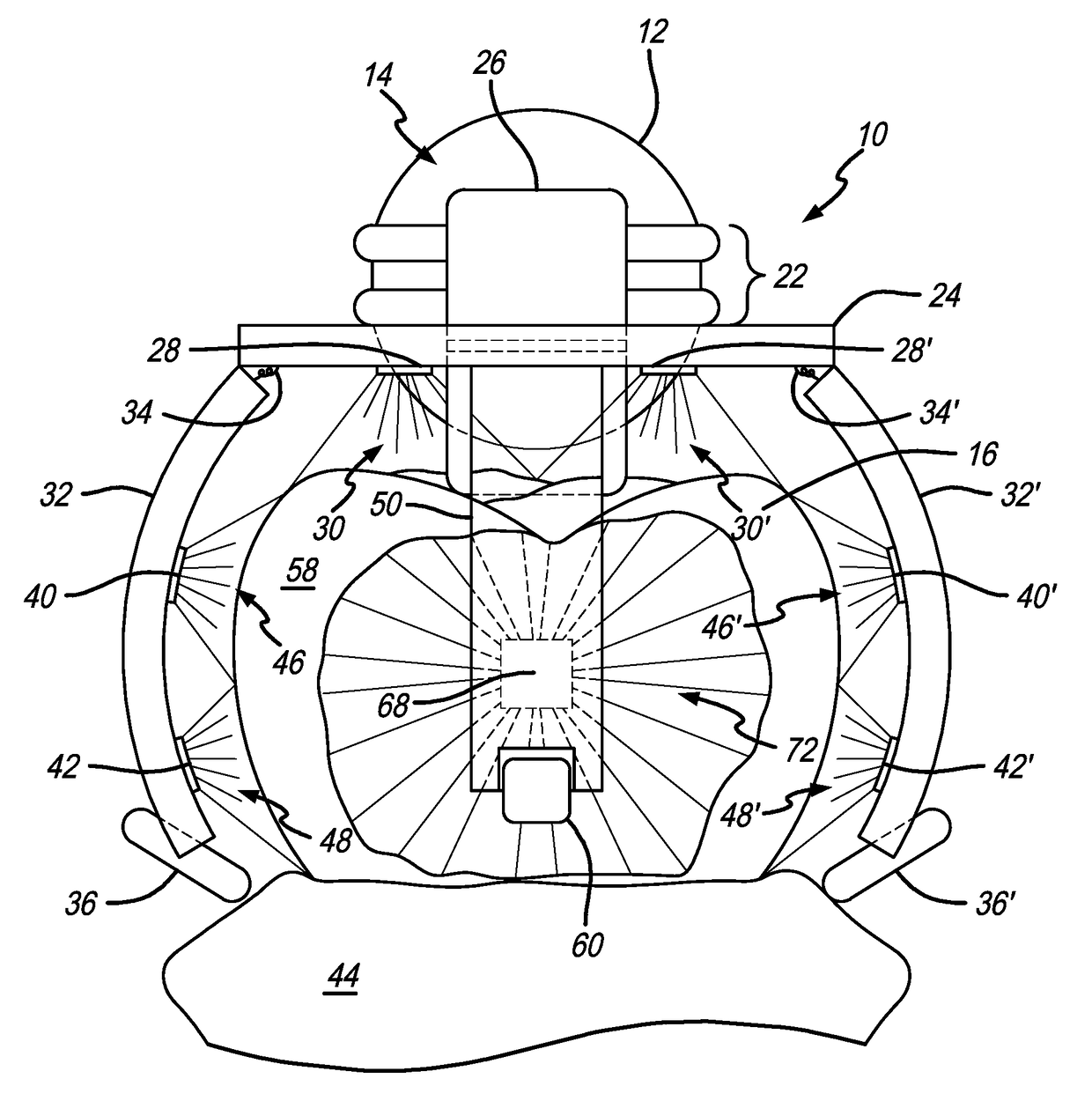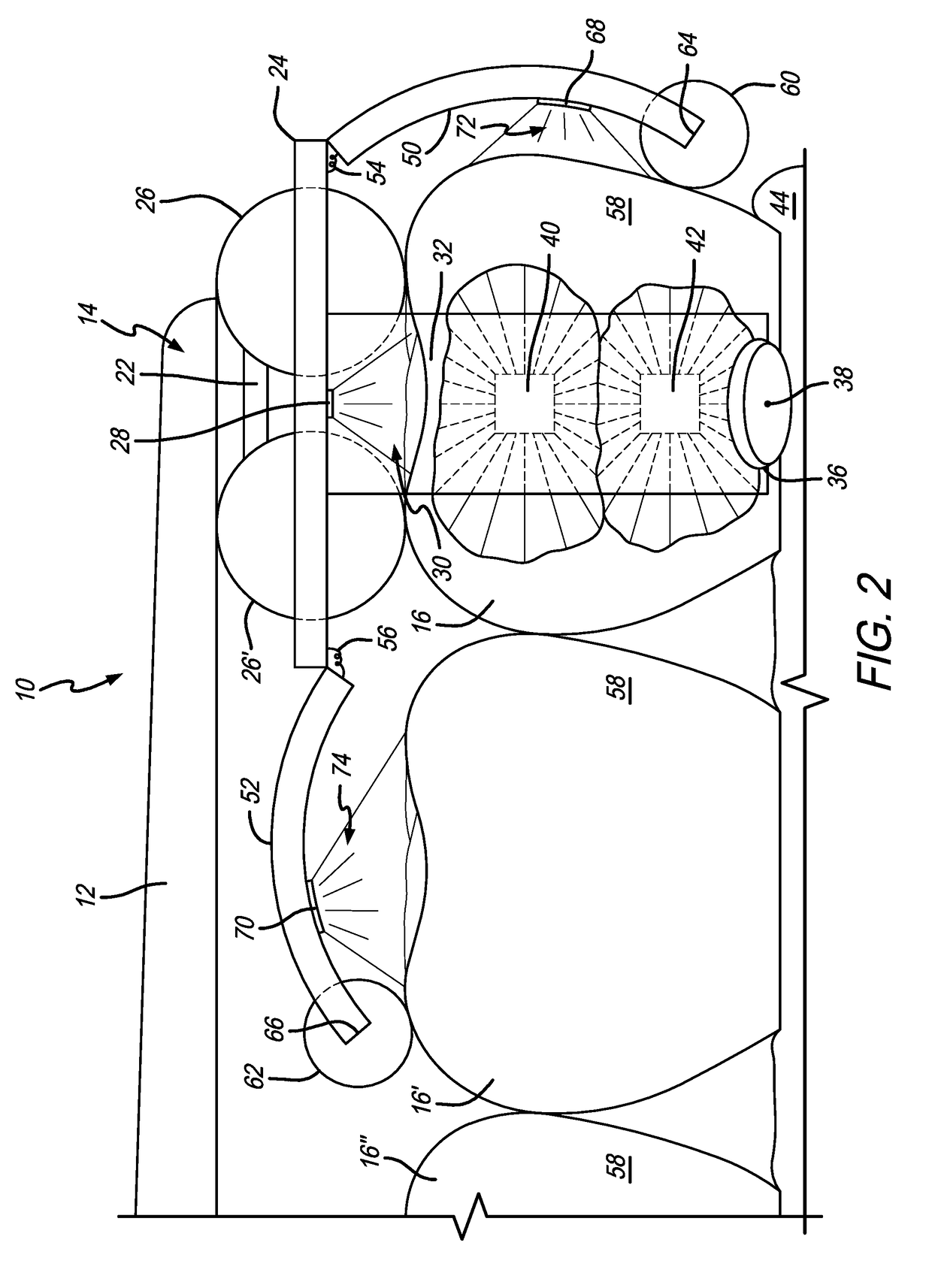Dental imager and method for recording photographic impressions
a dental impression and imager technology, applied in the field of dental impression recording, can solve the problems of limiting the ability of patients to breathe properly, limiting the ability of patients to rest properly, and presenting numerous limitations and inconveniences in the recording form of dental impressions, so as to improve image quality and reduce errors
- Summary
- Abstract
- Description
- Claims
- Application Information
AI Technical Summary
Benefits of technology
Problems solved by technology
Method used
Image
Examples
Embodiment Construction
[0051]As shown in the exemplary drawings for purposes of illustration, embodiments for a dental imager as disclosed herein are generally referred to by reference numeral 10 in FIGS. 1-3 and 5-11. In general, the dental imager 10 is a relatively simple design that facilitates quick learning and a “one size fits all” solution, thereby reducing the time to train personnel to take accurate dental impressions, and may be used to image, scan, examine, and / or map the three-dimensional characteristics of intraoral surfaces, such as teeth. For instance, the dental imager 10 can be used to capture the exact shape of a single tooth, multiple teeth in one or more locations, a portion of a dental arc, or the entire dental arc for faster diagnosis. The dental imager 10 also eliminates the inaccuracies of creating dental impressions when a scanned surface is uneven (e.g., teeth surrounded by braces or other dental fixtures) and can provide still images or real-time video output to a viewing monito...
PUM
 Login to View More
Login to View More Abstract
Description
Claims
Application Information
 Login to View More
Login to View More - R&D
- Intellectual Property
- Life Sciences
- Materials
- Tech Scout
- Unparalleled Data Quality
- Higher Quality Content
- 60% Fewer Hallucinations
Browse by: Latest US Patents, China's latest patents, Technical Efficacy Thesaurus, Application Domain, Technology Topic, Popular Technical Reports.
© 2025 PatSnap. All rights reserved.Legal|Privacy policy|Modern Slavery Act Transparency Statement|Sitemap|About US| Contact US: help@patsnap.com



